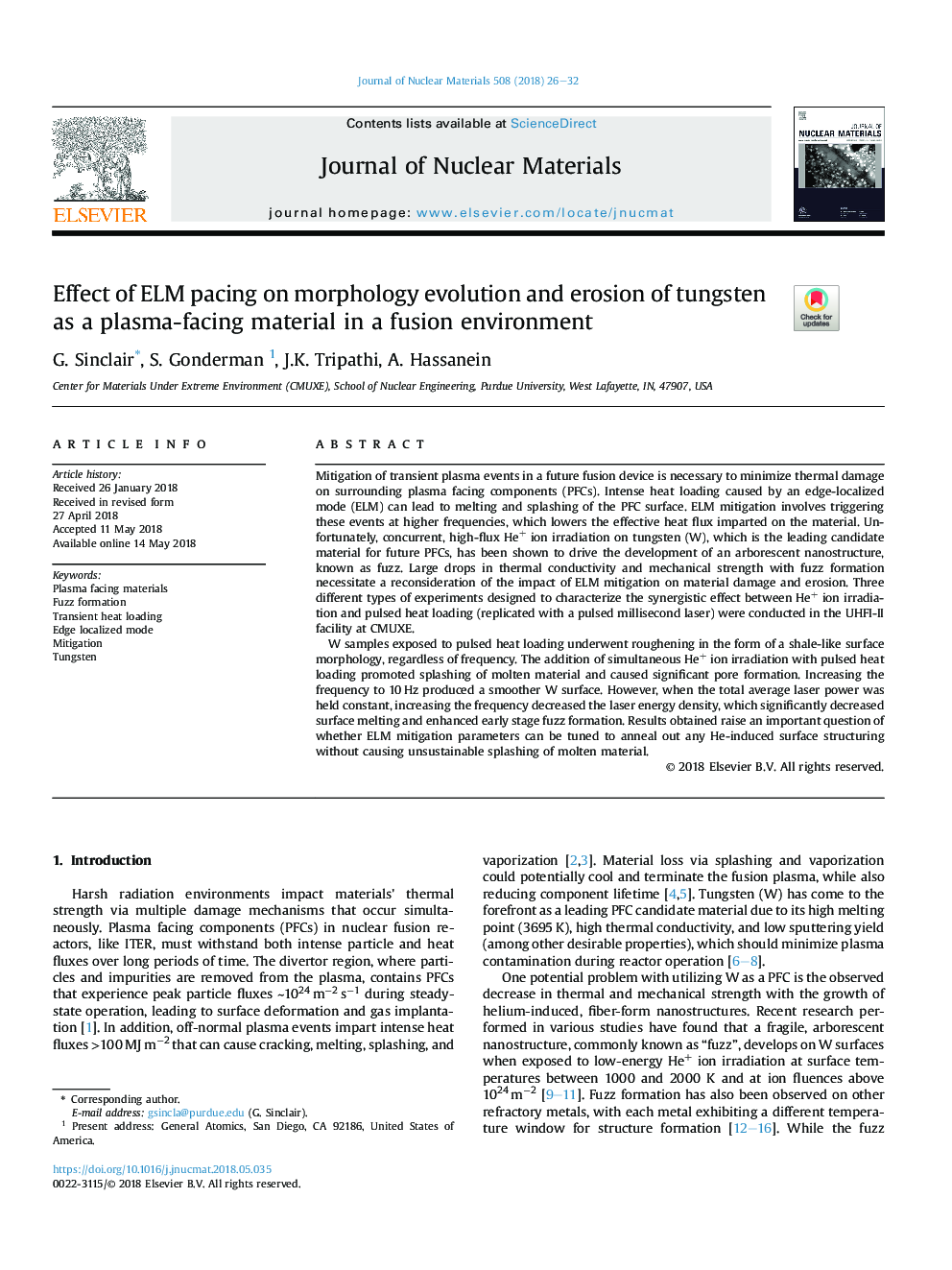| Article ID | Journal | Published Year | Pages | File Type |
|---|---|---|---|---|
| 7962954 | Journal of Nuclear Materials | 2018 | 7 Pages |
Abstract
W samples exposed to pulsed heat loading underwent roughening in the form of a shale-like surface morphology, regardless of frequency. The addition of simultaneous He+ ion irradiation with pulsed heat loading promoted splashing of molten material and caused significant pore formation. Increasing the frequency to 10â¯Hz produced a smoother W surface. However, when the total average laser power was held constant, increasing the frequency decreased the laser energy density, which significantly decreased surface melting and enhanced early stage fuzz formation. Results obtained raise an important question of whether ELM mitigation parameters can be tuned to anneal out any He-induced surface structuring without causing unsustainable splashing of molten material.
Related Topics
Physical Sciences and Engineering
Energy
Nuclear Energy and Engineering
Authors
G. Sinclair, S. Gonderman, J.K. Tripathi, A. Hassanein,
